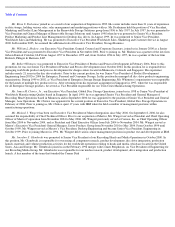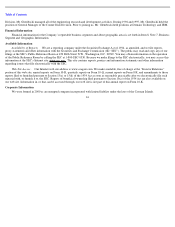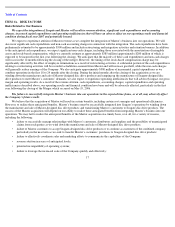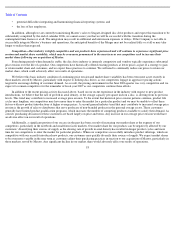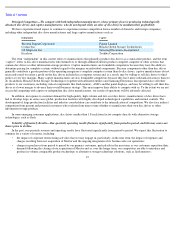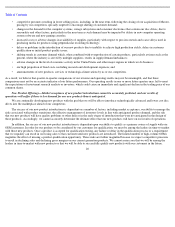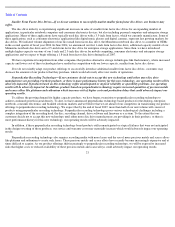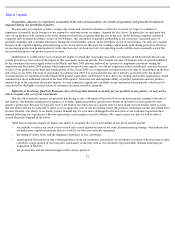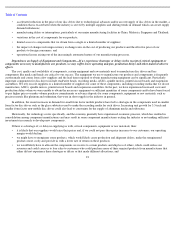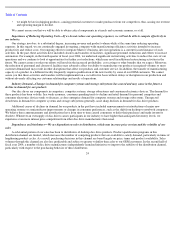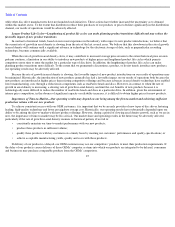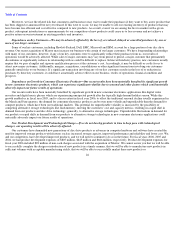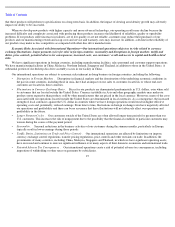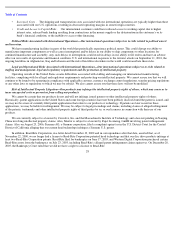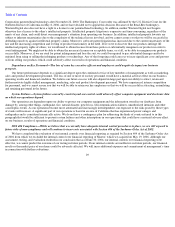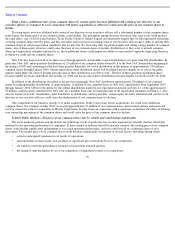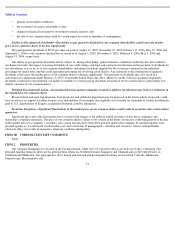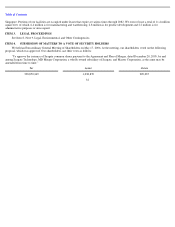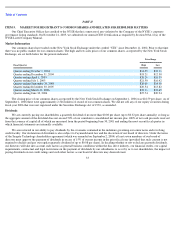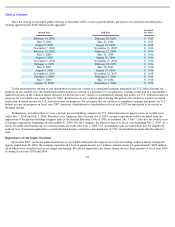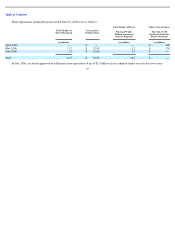Seagate 2005 Annual Report Download - page 27
Download and view the complete annual report
Please find page 27 of the 2005 Seagate annual report below. You can navigate through the pages in the report by either clicking on the pages listed below, or by using the keyword search tool below to find specific information within the annual report.
Table of Contents
while other disc drive manufacturers have not launched such initiatives. These actions have further increased the uncertainty as to demand
within this market sector. To the extent that distributors reduce their purchases of our products or prices decline significantly in the distribution
channel, our results of operations would be adversely affected.
Longer Product Life Cycles—Lengthening of product life cycles can make planning product transitions difficult and may reduce the
favorable impact of new product transitions.
In contrast to historical trends, based on our recent experience in the industry with respect to new product introductions, we believe that
the current rate of growth in areal density is slowing from the rate of the last several years. We believe that this slowdown in the rate of growth
in areal density will continue until a significant advance in technology for the electronic storage of data, such as perpendicular recording
technology, becomes commercially available.
When the rate of growth in areal density slows, it may contribute to increased average price erosion to the extent historical price erosion
patterns continue, a limitation in our ability to introduce new products at higher prices and lengthened product life cycles which permits
competitors more time to enter the market for a particular type of disc drive. In addition, the lengthening of product life cycles can make
planning product transitions more difficult. To the extent that we prematurely discontinue a product, or do not timely introduce new products,
our operating results may be adversely affected.
Because the rate of growth in areal density is slowing, the favorable impact of new product introductions on our results of operations may
be minimized. Historically, the introduction of new products generally has had a favorable impact on our results of operations both because the
new products are introduced at higher prices than existing competitive offerings and because advances in areal density technology have enabled
lower manufacturing costs through a reduction in components such as read/write heads and discs. However, in contrast to when the rate of
growth in areal density is increasing, a slowing rate of growth in areal density can limit the cost benefits of new products because it is
technologically more difficult to reduce the number of read/write heads and discs in a particular drive. In addition, given the environment of
intense price competition, in the absence of significant capacity or reliability increases, it is difficult to obtain higher prices for new products.
Importance of Time-to-Market—Our operating results may depend on our being among the first-to-market and achieving sufficient
production volume with our new products.
To achieve consistent success with our OEM customers, it is important that we be an early provider of new types of disc drives featuring
leading, high-quality technology and lower per gigabyte storage cost. Historically, our operating results have substantially depended upon our
ability to be among the first-to-
market with new product offerings. However, during a period of slowing areal density growth, such as we are in
now, the importance of time-to-market may be less critical. Our market share and operating results in the future may be adversely affected,
particularly if the rate of growth in areal density resumes its historical pattern, if we fail to:
•
consistently maintain our time-to-market performance with our new products;
•
produce these products in sufficient volume;
•
qualify these products with key customers on a timely basis by meeting our customers’ performance and quality specifications; or
If delivery of our products is delayed, our OEM customers may use our competitors’ products to meet their production requirements. If
the delay of our products causes delivery of those OEMs’ computer systems into which our products are integrated to be delayed, consumers
and businesses may purchase comparable products from the OEMs’ competitors.
25
•
achieve acceptable manufacturing yields, quality and costs with these products.


